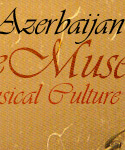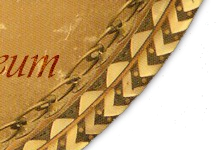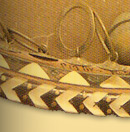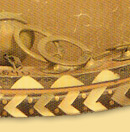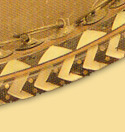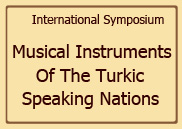Shirvan Tanbur

Listen

|
The Shirvan tanbur has a pear-shaped form and belongs to the same family of
instruments as the saz. This two-stringed, sometimes three-stringed, musical
instrument of a very simple design was very popular in the Oriental world for
centuries and is now widespread in the East, particularly among Central Asian
peoples. The tanbur has a very ancient history. Al Farabi emphasizes its
pre-Islamic origin. A lot of information on the tanbur that was popular in the
medieval era among both palace and national musicians can be found in classical
poetry and medieval miniatures.
In “Haft-Jam” by Fuzuli, the tanbur is described in the following manner:
Singer, show heartfelt affection to the tanbur,
Open a door for it
with a key of respect.
Through opened door will inspiration come,
And
souls will flourish in happiness.
This instrument was widespread in the Middle Ages in Azerbaijan and was known
as the “Shirvan tanbur”. Later, it was named the “Shirvan Tabriz tanbur” due to
the popularity of this instrument among Tabriz’s population.
Beginning in the second half of the 19th century, the tanbur gradually began
to decline in Azerbaijan.
There used to be various kinds of tanbur; for instance, its Baghdad,
Khorasan, Indian, Shirvan and Afghan versions are mentioned in literature. Some
kinds of tanbur were played with a bow and called “ney-tanbur”.
The Shirvan tanbur has a small body and a long neck. Its body is made of
mulberry wood and pear wood, and the neck and head are made of walnut. The face
of the instrument has a thin wooden plate made of pine or mulberry wood. A total
of 14-17 frets are tied to the finger-board of the instrument. Another three to
four frets are tied to the face of the instrument. They are called “khas parda”
(special frets). There are two strings in the instrument.
The tuning of the Shirvan tanbur is similar to that of the saz. The first
string is used for performing the melody, and the second string is tuned in
various ways, depending on the character of the music. The tanbur is unique in
that it is played with the thumb and middle finger of the right hand. Sometimes
it’s also played with the help of a plectrum, which is laid under a thimble held
on the forefinger of the right hand. The total length of the tanbur is 940 mm.
The length of the body is 385 mm, the width is 200 mm and the height is 135 mm.
The length of the neck is 340 mm, and the length of the head is 120 mm. The
Shirvan tanbur ranges from the “do” of the first octave to the “mi” of the
second octave.
|

